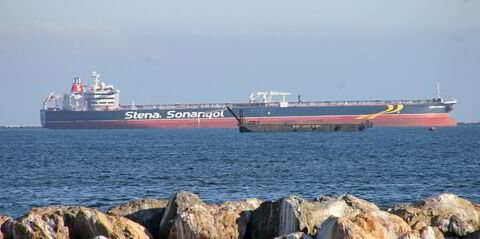Ole Hjertaker, the chief executive of Ship Finance International, pointed this out during an interview with TradeWinds on the sidelines of the Shipping 2015 conference in Stamford.
In the coming years Hjertaker believes dual-fuel engines will become increasingly popular in the containership segment but noted the timetable remains uncertain.
“If you look at the liner companies, very few of the major carriers have adopted this technology, and it doesn’t seem like they are in a rush,” he added.
“I suppose some are taking a ‘wait and see’ approach but I find the fact that so few have [equipped their containerships with dual-fuel engines] very interesting.”
Hjertaker believes dual-fuel engines have a number of benefits but also argued that the availability of LNG fuel, or lack thereof, is a challenge the industry must address on a "global scale" before more owners embrace this technology.
“Operators like us must also consider the economics,” he added. “The technology is quite expensive and LNG containment systems can eat away at cargo capacity.
“This is something we explored when we placed orders for containerships but, at least at that time, customers were unwilling to shoulder the cost.
"Plus, you must remember there are other considerations, other options out there, other ways to comply with emissions requirements, like low-sulphur fuel.”
In the near-term, Hjertaker said his company does not intend to invest in dual-fuel power but didn’t rule out the possibility altogether.
“You never know, if the economics made sense and our customers wanted it, sure, this is certainly something we would consider, it comes down to cost and the customer,” the executive explained.
Ship Finance International is based in Oslo where it oversees a fleet of nearly 70 tankers, bulkers, boxships, car carriers, drilling rigs and offshore support vessels. At last check the total included two dozen containerships, according to its website.



